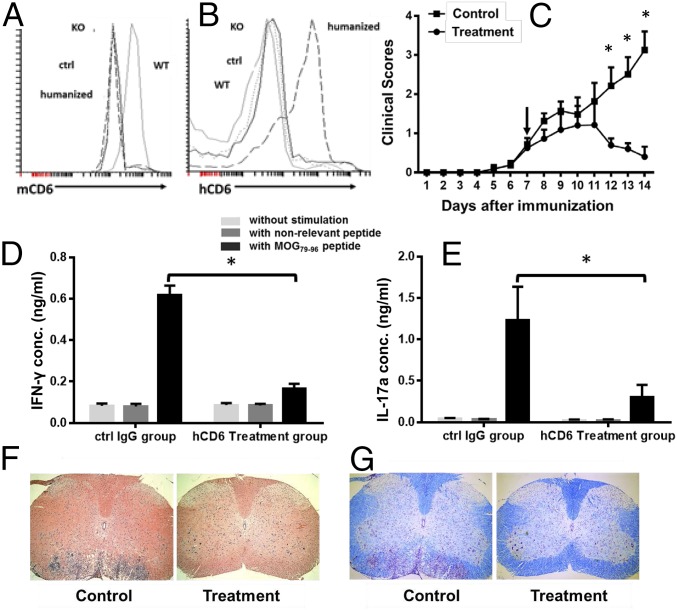Fig. 6.
Mouse anti-human CD6 mAb (UMCD6) treats EAE in CD6 humanized mice. (A and B) CD6 humanized mice do not express mouse CD6 (A) but express human CD6 (B) on their lymphocytes. (C) EAE clinical scores of CD6 humanized mice treated with UMCD6 and control mouse IgGs. CD6 humanized mice were immunized to induce EAE. After mice showed mild clinical symptoms, they were randomly divided into two groups with one group receiving ∼0.4 mg per mouse anti-human CD6 IgG (UMCD6) (circles) and the other receiving 0.4 mg purified mouse IgGs (squares). Clinical scores were recorded daily. n = 14 in each group, *P < 0.05. (D and E) Th1 (D) and Th17 (E) recall assays in CD6 humanized mice treated with UMCD6 or control IgG. At the end of treatment experiments (day 14), splenocytes from the mice were collected and incubated without peptide (light gray bars), with 10 µg/mL of a nonrelevant peptide (IRBP1–20, dark gray bars) or with 10 µg/mL MOG79–96 peptide (black bars) for 72 h. IFN-γ and IL-17a levels in the culture supernatants were measured by ELISA. n = 7 in each group, *P < 0.05. (F and G) Representative images of spinal cord sections showing significantly reduced cell infiltration (F) and demyelination (G) in the UMCD6-treated mice compared with the controls. (Magnification: 4×.)

